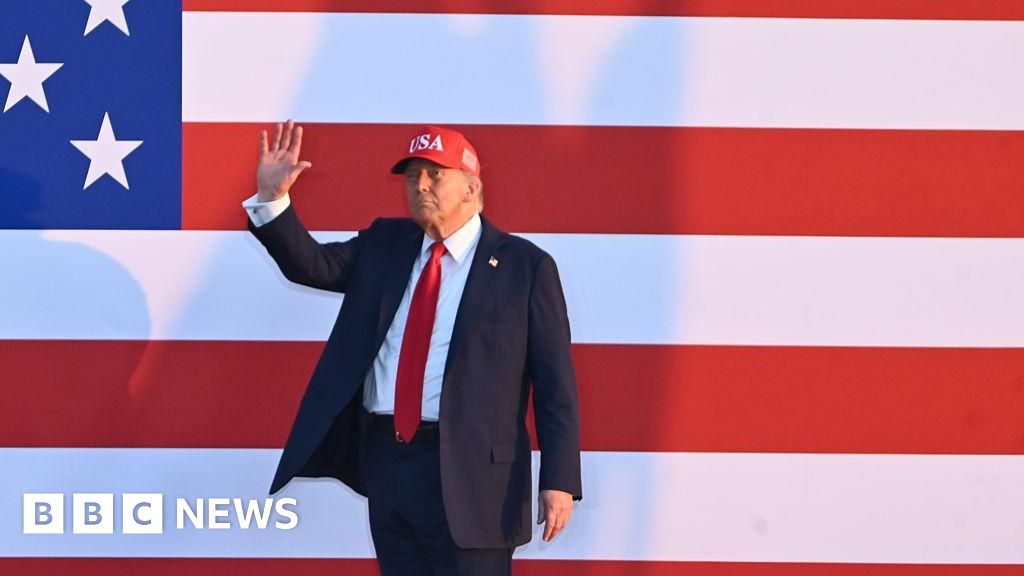The Looming Shadow of US Debt: Can the World Keep Lending to Uncle Sam?
The passage of the “Big Beautiful Budget Bill” through Congress, championed by [hypothetical president], has reignited concerns about the United States’ growing debt and its long-term sustainability. While the bill aims to stimulate the economy, its projected increase to the national debt pile has sparked debate among economists, policymakers, and investors alike. This article delves into the intricacies of the US debt situation, examining its potential consequences and exploring the options available to navigate this complex landscape.
The Growing Debt Burden: A Cause for Concern?
The “Big Beautiful Budget Bill” is expected to add a significant amount to the US’s already substantial debt, raising the question: how much can the US borrow before the world loses faith?
Elon Musk, the tech entrepreneur and former supporter of the president, criticized the bill as a “disgusting abomination”, highlighting the growing unease surrounding the country’s fiscal policies. This sentiment is echoed by many who fear that the escalating debt could lead to a decline in the dollar’s value and higher interest rates for American borrowers.
The US relies on borrowing to bridge the gap between its annual income and expenditure. Since the beginning of the year, the dollar has weakened against other major currencies, reflecting a loss of investor confidence.
Furthermore, the yield curve, which represents the difference between interest rates on long-term and short-term loans, has steepened. This indicates increased apprehension about the long-term sustainability of US borrowing, despite the country’s relatively slow pace of interest rate cuts compared to the EU and the UK.
Ray Dalio, founder of the world’s largest hedge fund, warns that the US is approaching a critical juncture, estimating that loan and interest repayments could soon reach staggering levels. He stresses the urgency of addressing the government’s financial condition to avoid potentially catastrophic consequences.
Potential Consequences: A Glimpse into the Future
What could these consequences look like? Several scenarios are possible, each with its own set of challenges and implications.
Austerity Measures: A Bitter Pill to Swallow
One option is a drastic reduction in government spending and a significant increase in taxes. Cutting the budget deficit from its current level to a more sustainable level could prevent future economic turmoil. However, the current political climate favors tax cuts over spending reductions, making this solution politically difficult.
Monetary Policy Intervention: A Risky Gamble
Another approach is for the US central bank to print more money and use it to buy up government debt, a strategy employed after the 2008 financial crisis. However, this can lead to inflation and exacerbate inequality, as asset owners benefit while wage earners struggle.
Sovereign Default: An Unthinkable Outcome
The most drastic scenario is a US default, where the government simply refuses to pay its debts. Given the pivotal role of the US Treasury in the global financial system, this would have severe and far-reaching consequences.
The “Cleanest Dirty Shirt”: The Dollar’s Enduring Appeal
Despite these concerns, the US debt situation is not yet dire. The world currently has limited alternatives to the dollar, which remains the dominant reserve currency. Economist Mohamed El-Erian argues that while many are trying to reduce their dollar holdings, the lack of viable alternatives forces them to continue relying on it.
The Governor of the Bank of England recently acknowledged that the US Treasury is aware of the issues surrounding the debt levels and the dollar’s status, suggesting that the matter is being taken seriously at the highest levels.
Contextualizing the Debt: A Matter of Perspective
While a debt is a cause for worry, it’s important to consider it in relation to the country’s income. The US economy, which produces an income of around $25tn a year, has the world’s most innovative and wealth-creating economy behind it.
It is also worth noting that concerns about the dollar’s demise have been voiced for decades, yet it has remained resilient. However, this does not mean that its status and value are guaranteed.
Analysis and Opinion: Navigating the Debt Dilemma
The US debt situation is a complex issue with no easy solutions. While the country’s economic strength and the dollar’s dominance provide some reassurance, the escalating debt levels cannot be ignored.
The “Big Beautiful Budget Bill,” while potentially offering short-term economic stimulus, carries the risk of exacerbating the long-term debt problem. Policymakers must find a way to balance economic growth with fiscal responsibility.
The Need for a Balanced Approach
One possible solution is a combination of targeted spending cuts and strategic tax reforms. Cutting wasteful spending and simplifying the tax code could boost efficiency and generate revenue without stifling economic activity.
Furthermore, investing in education, infrastructure, and research and development can foster long-term economic growth and increase the country’s ability to manage its debt.
International Cooperation
Addressing the US debt problem also requires international cooperation. Encouraging global economic growth and promoting fair trade practices can help reduce imbalances and support the dollar’s stability.
The Role of Monetary Policy
The US Federal Reserve will play a crucial role in navigating the debt situation. It must carefully manage interest rates to avoid inflation and ensure that the economy continues to grow.
Conclusion: A Call for Responsible Fiscal Management
The US debt situation is a serious challenge that requires careful attention and responsible fiscal management. While the country’s economic strength and the dollar’s dominance provide some cushion, the escalating debt levels cannot be ignored.
By adopting a balanced approach that combines targeted spending cuts, strategic tax reforms, and investments in long-term economic growth, the US can navigate its debt dilemma and ensure a stable and prosperous future. Ignoring the problem could have severe consequences, undermining the country’s economic leadership and jeopardizing the global financial system.
It’s imperative that policymakers, economists, and the public engage in a constructive dialogue to find sustainable solutions and avoid the looming shadow of unchecked debt. The future of the US economy, and indeed the global financial system, may depend on it.





